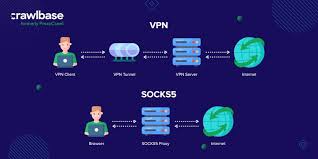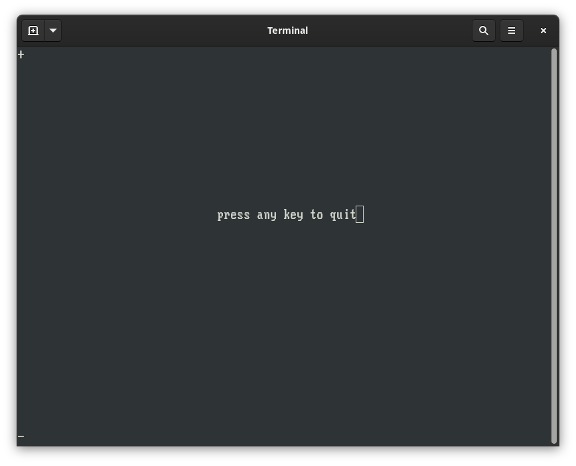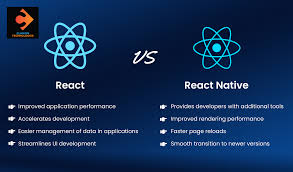前言 {#前言}
这个系列将会有以下内容:
什么是gradle {#什么是gradle}
维基百科:Gradle是一个基于Apache Ant和Apache Maven概念的项目自动化建构工具。它使用一种基于Groovy的特定领域语言来声明项目设置,而不是传统的XML。当前其支持的语言限于Java、Groovy和Scala,计划未来将支持更多的语言。
按我的理解,通俗一点讲,就是拿来构建项目的,我们平时在Android Studio上开发Android项目就是用Gradle进行构建的,相比于传统的xml方式,我感觉更加灵活.毕竟,可以写代码,根据不同的环境搞些骚操作.
gradle里面其实需要学习的有3个
- Groovy, 官方文档: http://docs.groovy-lang.org/latest/html/groovy-jdk/index-all.html
- Gradle DSL, 官方文档: https://docs.gradle.org/current/javadoc/org/gradle/api/Project.html
- Android Plugin DSL, 官方文档: http://google.github.io/android-gradle-dsl/current/index.html
刚哥说过,遇到不会的直接查官方文档,不要每次去搜索引擎东搜西搜,这样效率很低。
这里插播一个小知识点,如何查询官方文档.比如在gradle中经常用的buildscript到底是什么?来到官方文档首页,点开顶部INDEX,搜索buildscript,即可找到这个东西是解释.
gradle项目结构 {#gradle项目结构}
首先我们来新建一个Android项目,什么都不要动.
- 最外层setting.gradle为根项目的配置,可以知道需要包含哪些模块,然后最外层的build.gralde也是根项目的配置.模块中的build.gradle是子项目的配置.
- gradle文件夹下面是版本配置以及gradle所需要的脚本
- 最外层的gradlew为linux/mac下的脚本,gradlew.bat是windows下面用的脚本
gradle配置顺序 {#gradle配置顺序}
简单在gradle中输出语句,看看配置顺序
|-------------------|-------------------------------------------------------------------------------------------------------------------|
| 1 2 3 4 5 | //settings.gradle println("setting 开始配置") include ':app' rootProject.name='Hello' println("setting 配置完成") |
|---------------------------|----------------------------------------------------------------------------------------------------------------------------------------------|
| 1 2 3 4 5 6 7 8 9 | //project build.gradle println("根build.gradle 开始配置") buildscript { repositories { } dependencies { } } println("根build.gradle 配置完成") |
|---------------------------------------------------|-----------------------------------------------------------------------------------------------------------------------------------------------------------------------------------------------------------|
| 1 2 3 4 5 6 7 8 9 10 11 12 13 14 15 16 17 | //app build.gradle println("app build.gradle 开始配置") project.afterEvaluate { println "所有模块都已配置完成" } android { defaultConfig { } buildTypes { } } dependencies { } println("app build.gradle 配置完成") |
打印语句写好后,clean Project,即可执行,输出如下:
|---------------------------------|-------------------------------------------------------------------------------------------------------------------------------------------------------------------------------|
| 1 2 3 4 5 6 7 8 9 10 11 | setting 开始配置 setting 配置完成 > Configure project : 根build.gradle 开始配置 根build.gradle 配置完成 > Configure project :app app build.gradle 开始配置 app build.gradle 配置完成 所有模块都已配置完成 |
可以看到首先是配置setting,知道有哪些模块.然后是配置根项目的build.gradle,然后才是子项目的build.gradle配置.
我在上面加了一个监听器project.afterEvaluate,可以通过查询官方文档了解它的详细内容,这是一个当所有的模块都配置完了的时候的回调.
其中,还可以在settings.gradle中添加一个监听器
|------------------------------------------------------------------------------|----------------------------------------------------------------------------------------------------------------------------------------------------------------------------------------------------------------------------------------------------------------------------------------------------------------------------------------------------------------------------------------------------------------------------------------------------------------------------------------------------------------------------|
| 1 2 3 4 5 6 7 8 9 10 11 12 13 14 15 16 17 18 19 20 21 22 23 24 25 26 | gradle.addBuildListener(new BuildListener() { @Override void buildStarted(Gradle gradle) { println("buildStarted------------") } @Override void settingsEvaluated(Settings settings) { println("settingsEvaluated------------") } @Override void projectsLoaded(Gradle gradle) { println("projectsLoaded------------") } @Override void projectsEvaluated(Gradle gradle) { println("projectsEvaluated------------") } @Override void buildFinished(BuildResult result) { println("buildFinished------------") } }) |
在执行构建的时候,这个监听器会监听到主要的生命周期事件,看名字大概就能大概猜出是什么意思,buildStarted已过时.也可以看看官方文档详细了解
加入之后打印如下:
|------------------------------------------------|------------------------------------------------------------------------------------------------------------------------------------------------------------------------------------------------------------------------------------------------------------------------------------------------|
| 1 2 3 4 5 6 7 8 9 10 11 12 13 14 15 16 | setting 开始配置 setting 配置完成 settingsEvaluated------------ projectsLoaded------------ > Configure project : 根build.gradle 开始配置 根build.gradle 配置完成 > Configure project :app app build.gradle 开始配置 app build.gradle 配置完成 所有模块都已配置完成 projectsEvaluated------------ buildFinished------------ |
gradle task {#gradle-task}
初识task {#初识task}
gradle中所有的构建工作都是由task完成的,它帮我们处理了很多工作,比如编译,打包,发布等都是task.我们可以在项目的根目录下,打开命令行(AS自带,底部有Terminal,打开就行)执行gradlew tasks查看当前项目所有的task.
在命令行如果执行失败,则将项目的JDK location设置成本地jdk的路径,而且jdk的版本还需要是java 8. 我用的jdk版本是1.8.0_231.
|------------------------------------------------------------------------------------------------------------------------------------------------------------------------------------------------------------------------------------|-------------------------------------------------------------------------------------------------------------------------------------------------------------------------------------------------------------------------------------------------------------------------------------------------------------------------------------------------------------------------------------------------------------------------------------------------------------------------------------------------------------------------------------------------------------------------------------------------------------------------------------------------------------------------------------------------------------------------------------------------------------------------------------------------------------------------------------------------------------------------------------------------------------------------------------------------------------------------------------------------------------------------------------------------------------------------------------------------------------------------------------------------------------------------------------------------------------------------------------------------------------------------------------------------------------------------------------------------------------------------------------------------------------------------------------------------------------------------------------------------------------------------------------------------------------------------------------------------------------------------------------------------------------------------------------------------------------------------------------------------------------------------------------------------------------------------------------------------------------------------------------------------------------------------------------------------------------------------------------------------------------------------------------------------------------------------------------------------------------------------------------------------------------------------------------------------------------------------------------------------------------------------------------------------------------------------------------------------------------------------------------------------------------------------------------------------------------------------------------------------------------------------------------------------------------------------------------------------------------------------------------------------------------------------------------------------------------------------------------------------------------------------------------------------------------------------------------------------------------------------------------------------------------------------------------------------------------------------------------------------------------------------------------------------------------------------------------------------------------------------------------------------------------------------------------------------------------------------------------------------------------------------------------------------------------------------------------------------------------------------------------------------------------------------------------------------------------------------------------------------------------------|
| 1 2 3 4 5 6 7 8 9 10 11 12 13 14 15 16 17 18 19 20 21 22 23 24 25 26 27 28 29 30 31 32 33 34 35 36 37 38 39 40 41 42 43 44 45 46 47 48 49 50 51 52 53 54 55 56 57 58 59 60 61 62 63 64 65 66 67 68 69 70 71 72 73 74 75 76 | > Task :tasks ------------------------------------------------------------ Tasks runnable from root project ------------------------------------------------------------ Android tasks ------------- androidDependencies - Displays the Android dependencies of the project. signingReport - Displays the signing info for the base and test modules sourceSets - Prints out all the source sets defined in this project. Build tasks ----------- assemble - Assemble main outputs for all the variants. assembleAndroidTest - Assembles all the Test applications. build - Assembles and tests this project. buildDependents - Assembles and tests this project and all projects that depend on it. buildNeeded - Assembles and tests this project and all projects it depends on. bundle - Assemble bundles for all the variants. clean - Deletes the build directory. cleanBuildCache - Deletes the build cache directory. compileDebugAndroidTestSources compileDebugSources compileDebugUnitTestSources compileReleaseSources compileReleaseUnitTestSources Build Setup tasks ----------------- init - Initializes a new Gradle build. wrapper - Generates Gradle wrapper files. Cleanup tasks ------------- lintFix - Runs lint on all variants and applies any safe suggestions to the source code. Help tasks ---------- buildEnvironment - Displays all buildscript dependencies declared in root project 'Hello'. components - Displays the components produced by root project 'Hello'. [incubating] dependencies - Displays all dependencies declared in root project 'Hello'. dependencyInsight - Displays the insight into a specific dependency in root project 'Hello'. dependentComponents - Displays the dependent components of components in root project 'Hello'. [incubating] help - Displays a help message. model - Displays the configuration model of root project 'Hello'. [incubating] projects - Displays the sub-projects of root project 'Hello'. properties - Displays the properties of root project 'Hello'. tasks - Displays the tasks runnable from root project 'Hello' (some of the displayed tasks may belong to subprojects). Install tasks ------------- installDebug - Installs the Debug build. installDebugAndroidTest - Installs the android (on device) tests for the Debug build. uninstallAll - Uninstall all applications. uninstallDebug - Uninstalls the Debug build. uninstallDebugAndroidTest - Uninstalls the android (on device) tests for the Debug build. uninstallRelease - Uninstalls the Release build. Verification tasks ------------------ check - Runs all checks. connectedAndroidTest - Installs and runs instrumentation tests for all flavors on connected devices. connectedCheck - Runs all device checks on currently connected devices. connectedDebugAndroidTest - Installs and runs the tests for debug on connected devices. deviceAndroidTest - Installs and runs instrumentation tests using all Device Providers. deviceCheck - Runs all device checks using Device Providers and Test Servers. lint - Runs lint on all variants. lintDebug - Runs lint on the Debug build. lintRelease - Runs lint on the Release build. lintVitalRelease - Runs lint on just the fatal issues in the release build. test - Run unit tests for all variants. testDebugUnitTest - Run unit tests for the debug build. testReleaseUnitTest - Run unit tests for the release build. To see all tasks and more detail, run gradlew tasks --all |
可以看到,这里有很多的task.比如我们在命令行执行gradlew clean就是clean.执行gradlew installDebug就是构建debug项目然后安装到手机上.
编写task {#编写task}
书写task非常简单,比如我们在根目录的build.gradle中加入一个hello的task
|------------------------------------|---------------------------------------------------------------------------------------------------------------------------------------------------------|
| 1 2 3 4 5 6 7 8 9 10 11 12 | task hello() { println "hello world" //将给定的闭包 添加到此task操作链表的开头 doFirst { println "hello task doFirst" } doLast { println "hello task doLast" } } |
然后在命令行执行gradlew hello,输出如下
|---------------------------------------------|-----------------------------------------------------------------------------------------------------------------------------------------------------------------------------------------------------------------------------------|
| 1 2 3 4 5 6 7 8 9 10 11 12 13 14 15 | setting 开始配置 setting 配置完成 > Configure project : 根build.gradle 开始配置 hello world 根build.gradle 配置完成 > Configure project :app app build.gradle 开始配置 app build.gradle 配置完成 > Task :hello hello task doFirst hello task doLast |
它会先配置完成,才会执行.在一个task内部其实拥有一个action列表,执行的时候其实就是执行这个列表,它的类型是一个List.上面的doFirst和doLast就是创建action的两个方法,文档.doFirst是在最开始执行,doLast是在最后执行,大括号里面传入的是闭包.
task执行顺序 {#task执行顺序}
task是有执行顺序的,在创建完Android项目之后,根目录下的build.gradle中,有一个clean的task.这个是AS自动给我们生成的.
|---------------|------------------------------------------------------------------|
| 1 2 3 | task clean(type: Delete) { delete rootProject.buildDir } |
我们先在根目录下创建test.txt文件,然后我们在这个task中做一些改动,执行到clean这个task时删除根目录下的test.txt文件.
|---------------------------|--------------------------------------------------------------------------------------------------------------------------------------|
| 1 2 3 4 5 6 7 8 9 | task clean(type: Delete) { delete rootProject.buildDir doLast { def file = new File('test.txt') delete file println "清理" } } |
然后我们在hello这个task的下面写上
|-----------|-------------------------------|
| 1 | hello.dependsOn clean |
这样就表示hello这个task依赖clean这个task,当执行hello这个task时需要先执行clean.
我们在命令行执行gradlew hello看看是不是这样.我执行之后它的输出是
|---------------------|-----------------------------------------------------------------------------|
| 1 2 3 4 5 6 | > Task :clean 清理 > Task :hello hello task doFirst hello task doLast |
先执行clean,再执行hello这个task.而且还看到test.txt文件被删除(如果看到没删除,刷新一下看看)了,那么说明确实是clean先执行.
这个顺序有什么用?其实是很有用的,比如执行安装task的时候,肯定会先执行编译,打包这些步骤.
自带 gradle task {#自带-gradle-task}
当我们在AS中创建Android项目的时候,默认会带一些Android的一些gradle task,这些task都是gradle和Android Gradle Plugin给我们创建好的,可以直接用.
比如我们上面使用到的gradlew clean是用来清理项目的.和编译相关的task主要有:build和assemble,其中build依赖assemble,也就是说执行build之前会先执行assemble。在Android上,会根据buildType和productFlavor的不同自动创建多个assembleXxx任务,如assembleDebug,assembleRelease等,assemble会依赖所有的assembleXxx任务,也就是说执行assemble会先执行assembleDebug,assembleRelease等一系列的assemble任务。
如果想看Android Gradle Plugin源码,可以在app/build.gradle中的dependencies下面引入
|-----------|------------------------------------------------------------|
| 1 | compileOnly 'com.android.tools.build:gradle:3.5.2' |
然后就可以在项目的External Libraries中看到该jar的源码,
比如clean这个task是在com.android.build.gradle.tasks.CleanBuildCache.java里面定义的
|-------------------|------------------------------------------------------------------------------------------------------------------------------------------------------------|
| 1 2 3 4 5 | @TaskAction public void clean() throws IOException { Preconditions.checkNotNull(buildCache, "buildCache must not be null"); buildCache.delete(); } |
通过查询gradle官方文档可知,@TaskAction的作用:Marks a method as the action to run when the task is executed. 将方法标记为执行任务时要运行的动作.
Build script blocks {#Build-script-blocks}
还有一个东西,就是几乎每个项目都需要用到的地方,但是我之前却根本不知道它真正的名字.就是Build script blocks,打开项目的根目录的build.gradle文件.
|------------------------------------------------|-----------------------------------------------------------------------------------------------------------------------------------------------------------------------------------|
| 1 2 3 4 5 6 7 8 9 10 11 12 13 14 15 16 | buildscript { repositories { google() jcenter() } dependencies { classpath 'com.android.tools.build:gradle:3.5.2' } } allprojects { repositories { google() jcenter() } } |
每个项目都需要配置这些东西,但是我们真的知道他们的含义么?
首先是buildscript,查询文档可知:
|-------------------|-------------------------------------------------------------------------------------------------------------------------------------------------------------------------------------------------------------------------------------------------------|
| 1 2 3 4 5 | void buildscript(Closure configureClosure) Configures the build script classpath for this project. The given closure is executed against this project's ScriptHandler. The ScriptHandler is passed to the closure as the closure's delegate. |
为该项目配置构建脚本类路径.参数是Closure,闭包.这个闭包是委托给了ScriptHandler,又去看看ScriptHandler
|-------------|-------------------------------------------------------------------------------------------------------------------------------------------------------------------------------------------------|
| 1 2 | dependencies(Closure configureClosure) Configures the dependencies for the script. repositories(Closure configureClosure) Configures the repositories for the script dependencies. |
dependencies是添加编译依赖项的,repositories是为脚本依赖项配置存储库.他们的配置,都是用闭包的形式.
然后dependencies又是委托了DependencyHandler进行配置,对于怎么配置,官方还给了示例
|------------------------------------------------------------|---------------------------------------------------------------------------------------------------------------------------------------------------------------------------------------------------------------------------------------------------------------------------------------------------------------------------------------------------------------------------------------------------------------------------------------------------------------------------------------------------------------------------------------------------------------------------------------------------------------------------------------------------------------------------------|
| 1 2 3 4 5 6 7 8 9 10 11 12 13 14 15 16 17 18 19 20 | Example shows a basic way of declaring dependencies. apply plugin: 'java' //so that we can use 'implementation', 'testImplementation' for dependencies dependencies { //for dependencies found in artifact repositories you can use //the group:name:version notation implementation 'commons-lang:commons-lang:2.6' testImplementation 'org.mockito:mockito:1.9.0-rc1' //map-style notation: implementation group: 'com.google.code.guice', name: 'guice', version: '1.0' //declaring arbitrary files as dependencies implementation files('hibernate.jar', 'libs/spring.jar') //putting all jars from 'libs' onto compile classpath implementation fileTree('libs') } |
总结 {#总结}
本文带大家梳理了Gradle的执行顺序,Task和Build script blocks这些知识点.为了更好的认识Gradle.现在对Gradle了解又深了一步,而且如果以后遇到不懂的还知道到哪里去查文档,方便快捷,不用再到处搜了.
参考链接:https://blog.csdn.net/xfhy_/article/details/103335679
 51工具盒子
51工具盒子






